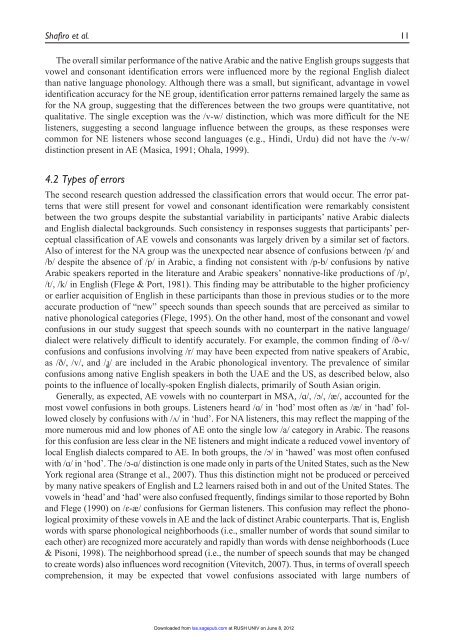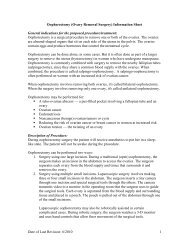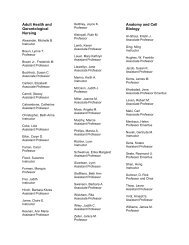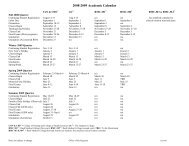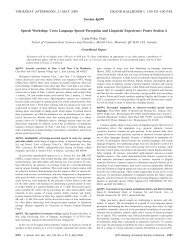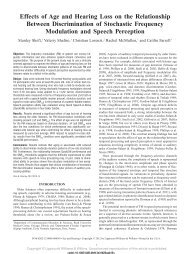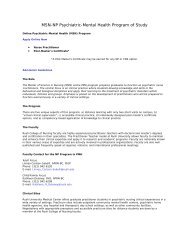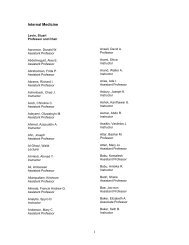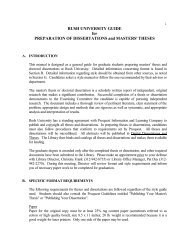English Vowels and Consonants by Native Arabic ... - Rush University
English Vowels and Consonants by Native Arabic ... - Rush University
English Vowels and Consonants by Native Arabic ... - Rush University
You also want an ePaper? Increase the reach of your titles
YUMPU automatically turns print PDFs into web optimized ePapers that Google loves.
Shafiro et al. 11The overall similar performance of the native <strong>Arabic</strong> <strong>and</strong> the native <strong>English</strong> groups suggests thatvowel <strong>and</strong> consonant identification errors were influenced more <strong>by</strong> the regional <strong>English</strong> dialectthan native language phonology. Although there was a small, but significant, advantage in vowelidentification accuracy for the NE group, identification error patterns remained largely the same asfor the NA group, suggesting that the differences between the two groups were quantitative, notqualitative. The single exception was the /v-w/ distinction, which was more difficult for the NElisteners, suggesting a second language influence between the groups, as these responses werecommon for NE listeners whose second languages (e.g., Hindi, Urdu) did not have the /v-w/distinction present in AE (Masica, 1991; Ohala, 1999).4.2 Types of errorsThe second research question addressed the classification errors that would occur. The error patternsthat were still present for vowel <strong>and</strong> consonant identification were remarkably consistentbetween the two groups despite the substantial variability in participants’ native <strong>Arabic</strong> dialects<strong>and</strong> <strong>English</strong> dialectal backgrounds. Such consistency in responses suggests that participants’ perceptualclassification of AE vowels <strong>and</strong> consonants was largely driven <strong>by</strong> a similar set of factors.Also of interest for the NA group was the unexpected near absence of confusions between /p/ <strong>and</strong>/b/ despite the absence of /p/ in <strong>Arabic</strong>, a finding not consistent with /p-b/ confusions <strong>by</strong> native<strong>Arabic</strong> speakers reported in the literature <strong>and</strong> <strong>Arabic</strong> speakers’ nonnative-like productions of /p/,/t/, /k/ in <strong>English</strong> (Flege & Port, 1981). This finding may be attributable to the higher proficiencyor earlier acquisition of <strong>English</strong> in these participants than those in previous studies or to the moreaccurate production of “new” speech sounds than speech sounds that are perceived as similar tonative phonological categories (Flege, 1995). On the other h<strong>and</strong>, most of the consonant <strong>and</strong> vowelconfusions in our study suggest that speech sounds with no counterpart in the native language/dialect were relatively difficult to identify accurately. For example, the common finding of /ð-v/confusions <strong>and</strong> confusions involving /r/ may have been expected from native speakers of <strong>Arabic</strong>,as /ð/, /v/, <strong>and</strong> /ɹ/ are included in the <strong>Arabic</strong> phonological inventory. The prevalence of similarconfusions among native <strong>English</strong> speakers in both the UAE <strong>and</strong> the US, as described below, alsopoints to the influence of locally-spoken <strong>English</strong> dialects, primarily of South Asian origin.Generally, as expected, AE vowels with no counterpart in MSA, /ɑ/, /ɔ/, /æ/, accounted for themost vowel confusions in both groups. Listeners heard /ɑ/ in ‘hod’ most often as /æ/ in ‘had’ followedclosely <strong>by</strong> confusions with /ʌ/ in ‘hud’. For NA listeners, this may reflect the mapping of themore numerous mid <strong>and</strong> low phones of AE onto the single low /a/ category in <strong>Arabic</strong>. The reasonsfor this confusion are less clear in the NE listeners <strong>and</strong> might indicate a reduced vowel inventory oflocal <strong>English</strong> dialects compared to AE. In both groups, the /ɔ/ in ‘hawed’ was most often confusedwith /ɑ/ in ‘hod’. The /ɔ-ɑ/ distinction is one made only in parts of the United States, such as the NewYork regional area (Strange et al., 2007). Thus this distinction might not be produced or perceived<strong>by</strong> many native speakers of <strong>English</strong> <strong>and</strong> L2 learners raised both in <strong>and</strong> out of the United States. Thevowels in ‘head’ <strong>and</strong> ‘had’ were also confused frequently, findings similar to those reported <strong>by</strong> Bohn<strong>and</strong> Flege (1990) on /ɛ-æ/ confusions for German listeners. This confusion may reflect the phonologicalproximity of these vowels in AE <strong>and</strong> the lack of distinct <strong>Arabic</strong> counterparts. That is, <strong>English</strong>words with sparse phonological neighborhoods (i.e., smaller number of words that sound similar toeach other) are recognized more accurately <strong>and</strong> rapidly than words with dense neighborhoods (Luce& Pisoni, 1998). The neighborhood spread (i.e., the number of speech sounds that may be changedto create words) also influences word recognition (Vitevitch, 2007). Thus, in terms of overall speechcomprehension, it may be expected that vowel confusions associated with large numbers ofDownloaded from las.sagepub.com at RUSH UNIV on June 8, 2012


